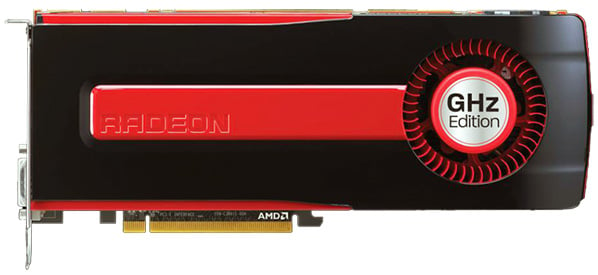AMD Radeon HD 7970 GHz Edition Review
Introduction and Specifications
It was exactly 6 months ago to the minute that AMD officially took the wraps off its Tahiti GPU and the original Radeon HD 7970. The Radeon HD 7970 was the first graphics card to feature AMD’s “Graphics Core Next”, or GCN, architecture and when it hit the scene, the Radeon HD 7970 proved to be the fastest single-GPU based graphics card available.
Since that time though, NVIDIA went ahead and released their Kepler-based GK104 GPU and the GeForce GTX 600 series of graphics cards. Although GK104 was comprised of fewer transistors and used less power, it ended up outpacing the Radeon HD 7970 more often than not, and propelled NVIDIA back into a leadership position at the high-end of the graphics card market.
As you can imagine, that didn’t sit well with AMD. So, for Tahiti’s half-birthday, they went ahead and refreshed the Radeon HD 7970, by tweaking a few key aspects of the card and adding some new features. The end result is the Radeon HD 7970 GHz Edition, an update to the original with a faster GPU, higher-clocked memory, and a new PowerTune with Boost feature that dynamically adjusts the GPU frequency and voltage when headroom is available.
AMD says the Radeon HD 7970 GHz Edition is the “World’s fastest and most versatile GPU”. Are they correct? Let’s fire the thing up and find out...

The AMD Radeon HD 7970 GHz Edition 3GB Graphics Card
![]()
AMD Radeon HD 7970
Specifications & Features
| Processing Units | |
| Stream Processors | 2048 |
| Compute Performance (SPDP/DPFP) | 4.3 TFLOPS / 1.08 TFLOPS |
| Texture Units | 128 |
| Z/Stencil | 128 |
| ROP Units | 32 |
| Clock Speeds | |
| Engine Clock | 1000 MHz |
| Boost Clock | 1050 MHz |
| Memory Clock (Data Rate) | 6.0Gbps / 6 GHz (effective) |
| Memory | |
| Memory Type | GDDR5 |
| Total Video Memory | 3072MB |
| Memory Interface | 384-bit |
| Total Memory Bandwidth | 288 GB/s |
| Texture Filtering Rate (Bilinear) | 134.4 GT/sec [33.6 GP/sec] |
| Physical & Thermal | |
| Fabrication Process | 28 nm |
| Transistor Count | 2.8 Billion |
| Connectors | 1 x Dual-Link DVI, 2 x mini-DP, 1 x HDMI |
| Form Factor | Dual Slot |
| Power Connectors | 1 x 6-pin, 1 x 8-pin |
| Recommended Power Supply | 500 watts |
| Thermal Design Power (TDP) | ~250 watts |
| AMD ZeroCore Power | <2 watts |
The main features and specifications of the Radeon HD 7970 GHz Edition are outlined in the chart above. We’ll go more in-depth on the coming pages, but for now, the information above should give you all an idea as to where the Radeon HD 7970 GHz Edition fits in AMD’s current graphics card line-up. Hint: It's the fastest single-GPU powered card from AMD to date.

Tahiti is turning .5 years old today!
Before we dig into the specifics of the Radeon HD 7970 GHz Edition, however, we’d like to direct you attention to a few recent articles that will help lay the foundation for what we’ll be showing you on the pages ahead. Since the Tahiti GPU at the heart of the card is identical to one use on AMD’s previously-released, high-end Radeon HD 7900 series products, we’ve covered many of its key features at length already. As such, we won’t be diving in to them again here.
In our coverage of the original Radeon HD 7970 launch, we detail all of the key features of AMD’s Graphics Core Next (GCN) architecture and discuss features like PowerTune and AMD ZeroCore Power technology, GCN Tessellation, Partially Resident Textures (PRT), and Discrete Digital Multi-Point audio, among others. In our Radeon HD 7950 coverage, we’ve got CrossFireX scores with the 7900-series and in the Radeon HD 7770 and 7750 launch piece, we detail AMD’s latest mainstream DX11 offerings and discuss how GCN was scaled down to cater to different market segments.






